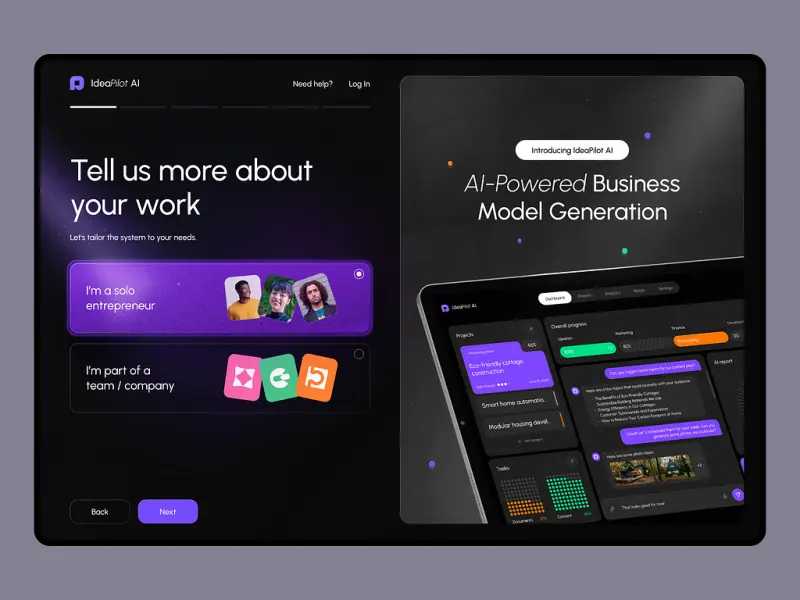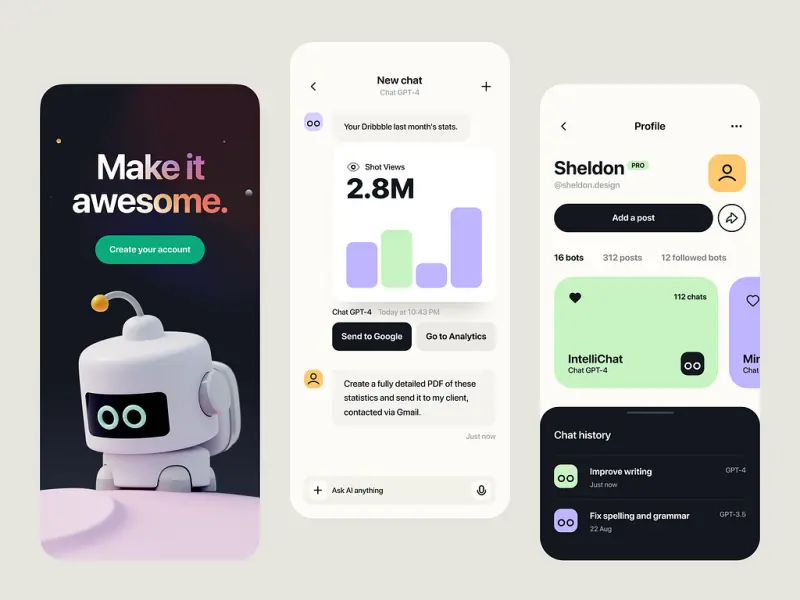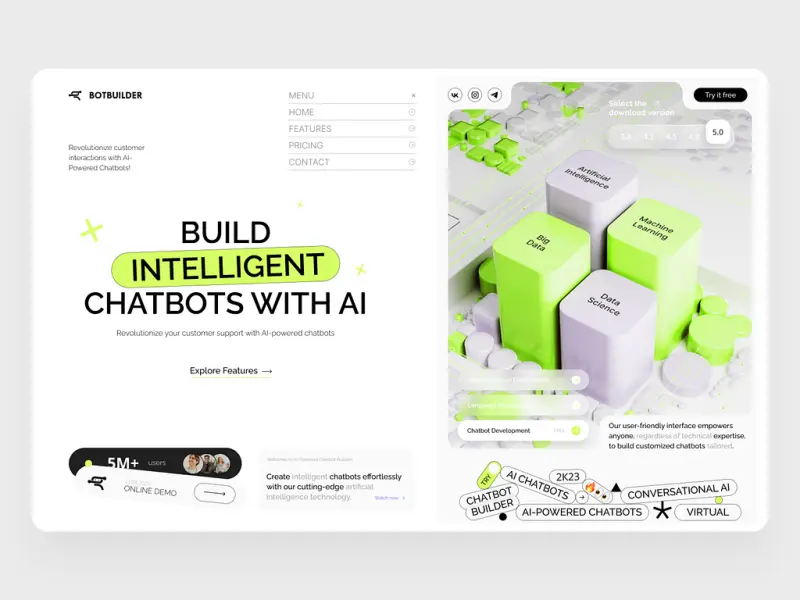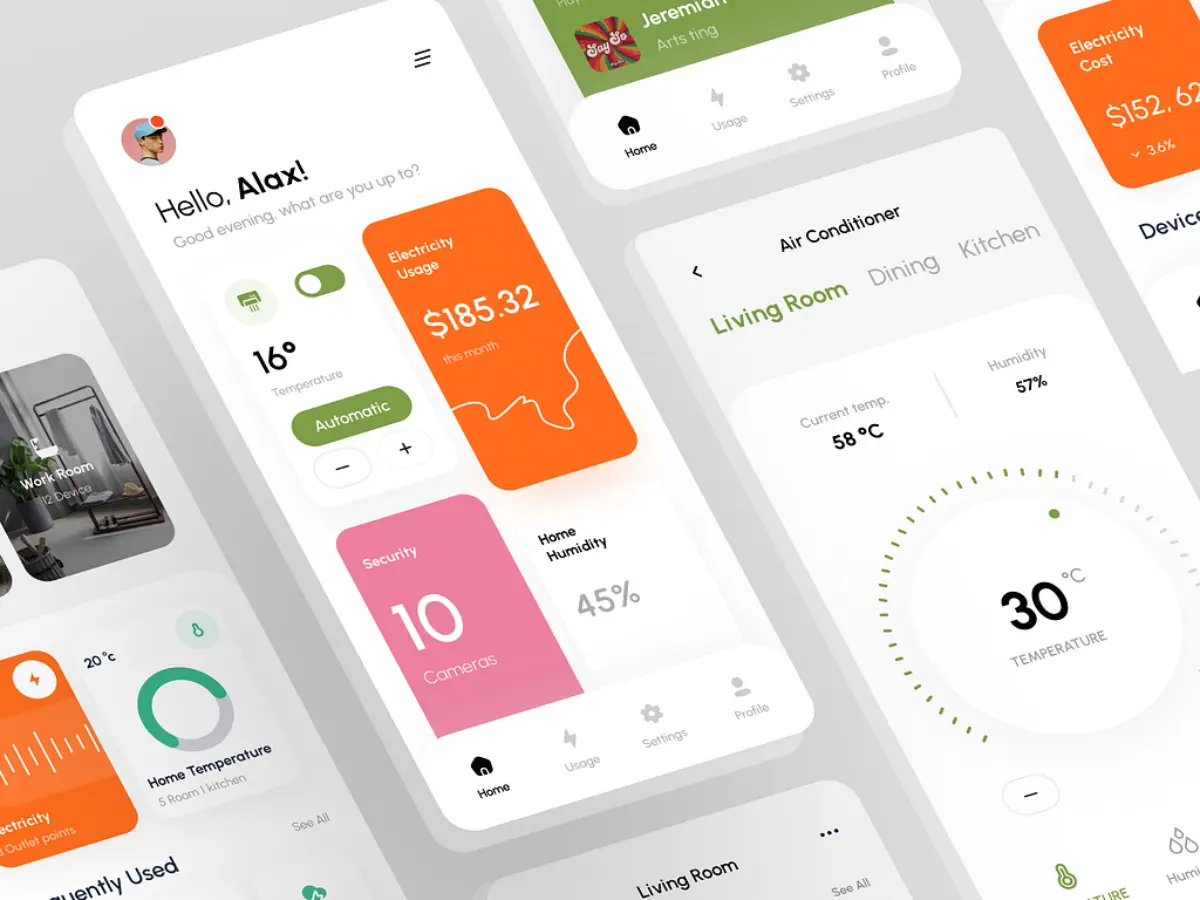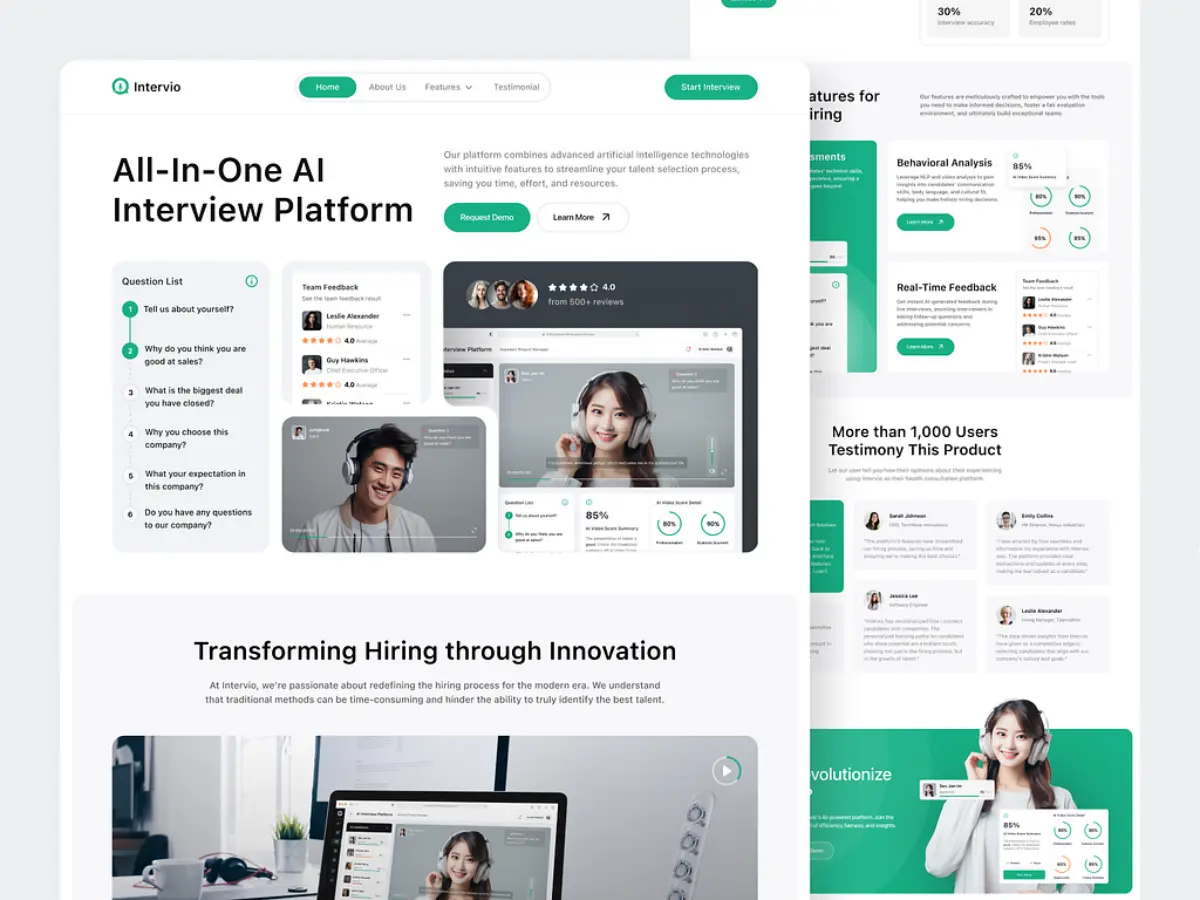How to Build AI System: Best Guide to Apply in 2025
- TECHVIFY Team
- 0 Comments
AI has evolved from science fiction into a practical tool that is now widely used across various industries. It is transforming our interaction with technology, driven by advances in machine learning, big data, cloud computing, and more cost-effective hardware. But for many, the idea of creating AI can still feel intimidating.
In this article, we’ll simplify the process of building AI, guiding you through everything from understanding the basics to integrating an AI system into your business. We’ll also cover the tools and techniques that can make AI development easier and show how platforms can help you find skilled AI software engineers to make the process smoother.
Whether you want to learn how to code AI or just explore what goes into creating it, this guide will be your go-to resource to understand how to build AI system from the ground up.
I. Grasping the Basics of AI
At its core, Artificial Intelligence (AI) is an expansive field within computer science dedicated to creating systems that can perform tasks generally associated with human intelligence. These tasks may include speech recognition and making decisions to interpret visual information and translating languages.
A key idea at the heart of modern AI is machine learning (ML). Unlike traditional programming, where developers directly code specific rules, ML algorithms are designed to learn from data and enhance their performance as they are exposed to more information. Another crucial area within AI is deep learning, which leverages neural networks with multiple hidden layers to detect intricate patterns within large datasets.
Building an AI system
Moreover, understanding natural language processing (NLP) and natural language generation (NLG) is essential. These technologies enable machines to comprehend and produce human language, which powers many well-known applications such as conversational AI chatbots and voice assistants like Siri or Alexa.
Although AI encompasses a wide range of concepts, principles, and technologies—including robotics, computer vision, and expert systems—having a solid understanding of ML, deep learning, and NLP/NLG provides a strong foundation for grasping its fundamental components. These three areas are the pillars supporting the most advanced generative AI applications being developed today.
Want to see more AI in different industries? Check here:
II. What Programming Languages Are Best for AI?
Before diving deeper into AI, it’s important to discuss the foundational aspects, including which programming languages are most suitable for building AI systems.
While any robust programming language can be used to create AI applications, certain languages are particularly well-suited for the task. Some languages excel because they offer built-in functions that are friendly to AI development, while others have thriving communities that have developed extensive tools to support AI projects. Here’s a brief overview of some of the top choices.
Python
No matter how you look at it, Python consistently ranks as one of the most popular programming languages. This general-purpose, interpreted language has earned its reputation due to its user-friendliness, readability, and extensive collection of packages, libraries, and frameworks.
Python is an excellent choice for AI development, boasting numerous tools designed to simplify the process. For instance, PyTorch is a powerful machine learning framework with a simple and user-friendly interface built on Python (or C++ for those who seek a challenge). Unsurprisingly, Python has become a favorite in the data science community.
Julia
Julia is the newest language on this list, which works to its advantage. It was designed specifically for data science, addressing many of the limitations found in other languages. Julia is less syntactically complex than Java or C++ and faster than Python or R.
Julia is gradually gaining traction in the data science community, and it’s worth following if you’re interested in cutting-edge AI technologies.
R
R was the dominant language in data science before Python took the spotlight. This open-source alternative to the S language has long been a favorite in academia. Although it’s not the easiest language to use or understand, its vast array of libraries, supported by the scientific community, makes it difficult to replace.
Other noteworthy languages include Scala, Java, and C++. These stand out due to their widespread adoption and popularity in both the software engineering world and beyond. While often more complex, these three languages are recognized for their performance and well-established ecosystems.
Have a Project Idea in Mind?
Get in touch with experts for a free consultation. We’ll help you decide on next steps, explain how the development process is organized, and provide you with a free project estimate.
III. How to Build AI System: A Step-by-Step Guide
The AI market is expected to grow considerably, with Gartner forecasting a compound annual growth rate (CAGR) of 36.6% from 2024 to 2030. This growth underscores the ongoing innovation and the increasing adoption of advanced technologies across various sectors. It highlights the increasing significance of AI in improving operational efficiencies and creating new opportunities for businesses around the world.
So, how to build AI system? Let’s go over the key steps to guide you in building an AI from scratch.
Step 1: Define Your Objective by Identifying the Problem
Begin by clearly outlining your objectives. Ask yourself, “What specific problem will AI help solve?” For instance, you might want to reduce patient wait times with an AI-powered scheduling system in healthcare. Establish measurable targets as you set your goal, such as reducing patient wait times by 20% or 30%. These clear metrics will guide the development process and help you measure the success of your AI system.
To effectively identify the problem, take the time to investigate and understand the current challenges in your system. Analyze patient flow data and peak times to pinpoint areas for improvement. Document your findings so you can clearly communicate your objective and strategy to all stakeholders involved.
How to build an AI system
Step 2: Gather and Prepare Your Data
Once you’ve defined the problem, the next step is to gather the right data. High-quality data is more important than excessive time refining the AI model. Data generally falls into two categories:
- Structured Data: This type of data is well-organized and includes easily searchable information, such as names, addresses, birth dates, and phone numbers.
- Unstructured Data: This data lacks a clear structure and includes items like audio files, images, infographics, and emails.
After collecting your data, you need to clean, process, and store it before using it to train your AI model. Data cleaning involves fixing errors and filling in missing information to improve the quality of your data.
Step 3: Select a Programming Language
Choosing the right programming language is crucial. You have several options, including classics like C++, Java, Python, and R. Python and R are particularly popular because they offer robust tools, such as extensive machine learning libraries. When choosing a language, consider your goals and needs:
- Python: Ideal for beginners, Python has a simple syntax that even non-programmers can learn easily.
- C++: Recognized for its outstanding performance and efficiency,
- Java: Java is easy to debug, user-friendly, and works on most platforms. It’s often used for building desktop applications and is well-suited for search engine algorithms and large-scale projects.
- R: Developed for predictive analysis and statistics, R is primarily used in data science.
Step 4: Choose the Right Platform
In addition to your data, you’ll need to select the right platform to train and deploy your AI model. You can choose between in-house frameworks and cloud-based platforms. The main difference is that cloud platforms make it easier for businesses to experiment and scale as projects grow, allowing for faster training and deployment of machine learning models.
- In-house Frameworks: Popular options include Scikit-learn, TensorFlow, and PyTorch, which are widely used for developing models internally.
- Cloud Frameworks: Machine Learning-as-a-Service (MLaaS) platforms or cloud-based ML options enable quicker training and deployment. You can build and deploy your models using Integrated Development Environments (IDEs), Jupyter Notebooks, and other graphical user interfaces.
Step 5: Develop and Choose an Algorithm
When instructing a computer on what to do, you’ll also need to decide how it will do it. This is where algorithms come in. Algorithms are sets of mathematical instructions that guide the AI model’s learning process. You’ll need to create or select machine learning algorithms for tasks like prediction or classification, depending on the problem you want to solve.
There are several types of algorithms, each suited to different tasks. You might use a combination of them based on your specific needs:
- Predictive Algorithms: These algorithms predict future outcomes using historical data. For instance, a predictive algorithm can analyze previous appointment durations and forecast future demand to minimize patient wait times.
- Classification Algorithms: These algorithms group data into predefined categories. In healthcare, they might classify patients based on their likelihood of missing appointments, allowing the system to adjust schedules accordingly.
- Clustering Algorithms: These algorithms group similar items together. This could be useful for classifying patient groups to enhance resource allocation.
- Decision Tree Algorithms: These employ specific rules to guide decision-making For example, they might determine the optimal scheduling strategy depending on the appointment type and time of day.
- Neural Networks: Inspired by the human brain, these algorithms are excellent at handling complex patterns and large datasets, making them ideal for improving decision-making and efficiency in healthcare systems.
Step 6: Train the Algorithms
Next, you need to train your algorithms using your gathered data. The goal is to optimize the algorithm to achieve a highly accurate AI model. You might need to gather additional data during training to further improve your model’s accuracy.
Accuracy is a critical aspect of this step. You should set a minimum acceptable threshold for your model’s accuracy. For example, a social networking company working on eliminating fake accounts might establish a “fraud score” between zero and one for each account. After some research, the team might decide to flag all accounts with a score above 0.9 for further review by the fraud team.
Step 7: Deploy and Monitor Your AI System
Finally, once you’ve developed a robust and self-sustaining AI solution, it’s time to deploy it. Following deployment, ongoing monitoring is crucial to ensure the AI system continues to perform well. Make sure to keep a close eye on its operation to identify and address any issues that arise, ensuring ongoing effectiveness.
IV. TECHVIFY’s AI Software Development Tips
Tip #1: Harness the Power of Machine Learning
Machine learning is an essential tool for developing AI software. It enables you to build systems that can learn and adapt over time, improving both their accuracy and overall performance.
To get started, working with well-organized, clean data is crucial—remember, “garbage in, garbage out.” Ensure that your data is accurate and closely aligned with your AI’s objectives. To avoid bias, make sure your training data accurately represents the real-world scenarios your AI will encounter.
Building artificial intelligence system
Additionally, don’t overlook the importance of regularly updating your model. As your AI system interacts with users and its environment, retraining it with new data is critical for maintaining its accuracy and relevance.
Tip #2: Create Post-Processing Scripts
Develop scripts that automatically correct common errors in your model’s output. For example, you could write a script to detect and fix issues like unbalanced braces or missing quotation marks.
Tip #3: Validate and Repair Data
Use JSON validation libraries, which are readily available in most programming languages, to check the validity of your data. If errors are found during validation, implement automated repair strategies whenever possible.
For situations where the JSON data cannot be repaired, ensure you have a backup plan. This might involve requesting the model to regenerate the output or providing the user with a default or error response.
Tip #4: Fine-Tune Your Model for Specific Tasks
If possible, consider fine-tuning your model for tasks that generate JSON responses. This additional training can make your model more proficient at producing valid JSON, improving its overall effectiveness in such tasks.
V. Common Challenges in Building an AI System
Building an AI system isn’t without hurdles. Here are some challenges you might come across:
-
Overfitting and Underfitting: Finding the right balance is important when building your model. Overfitting happens when your model becomes too complex, and you start to memorize the data instead of generalizing it, leading to poor performance on new data. Underfitting is the opposite—when your model is too simple and can’t capture the underlying patterns, resulting in inaccurate predictions.
-
Data Quality and Quantity: The effectiveness of your AI system depends a lot on the quality and amount of data you feed it. If your data is poor or insufficient, your AI’s performance will suffer, leading to results that are less accurate or reliable.
Building an AI system
-
Lack of Expertise: Building AI systems requires specialized skills in areas like machine learning, data science, and programming. However, finding people with the right expertise can be tough, especially since these skills are in high demand.
-
Ethical Concerns: Making sure your AI system is fair, transparent, and accountable is crucial. However, tackling issues like bias, privacy, and responsibility can be challenging and requires careful thought and planning.
-
Integration Issues: Adding AI to your existing systems can be tricky and sometimes disruptive. Ensuring that the AI integrates smoothly without causing new problems or affecting current operations is a significant challenge.
-
Keeping Up with Rapid Change: AI and technology are evolving quickly, so your systems can become outdated quickly. Regular updates and continuous learning are necessary to keep your AI system effective and relevant.
-
Regulatory Compliance: Data privacy laws and regulations constantly change, so staying compliant can be an ongoing challenge. Ensuring your AI system follows these rules while being effective is essential for legal and ethical reasons.
-
Scalability: As your business grows, your AI system needs to grow with it. Building an AI that can handle more data, users, and tasks without losing performance is a common challenge that requires careful planning and design.
Conclusion
While the idea of building artificial intelligence system might seem overwhelming, breaking it down into clear, actionable steps can make the process much more approachable. Whether you’re starting with the basics or navigating the complexities, this guide has hopefully given you a solid starting point.
If you’re thinking about taking the plunge but aren’t sure where to start or need expert advice, TECHVIFY is here to help. We offer free consultations and top-notch development services to help you bring your AI ideas to life. Get in touch with TECHVIFY today to see how we can support your AI journey.
TECHVIFY – Global AI & Software Solution Company
From Startups to Industry Leaders: TECHVIFY prioritizes results, not just deliverables. Accelerate your time to market and see ROI early with high-performing teams, AI (including GenAI) Software Solutions, and ODC (Offshore Development Center) services.
- Email: [email protected]
- Phone: (+84)24.77762.666




